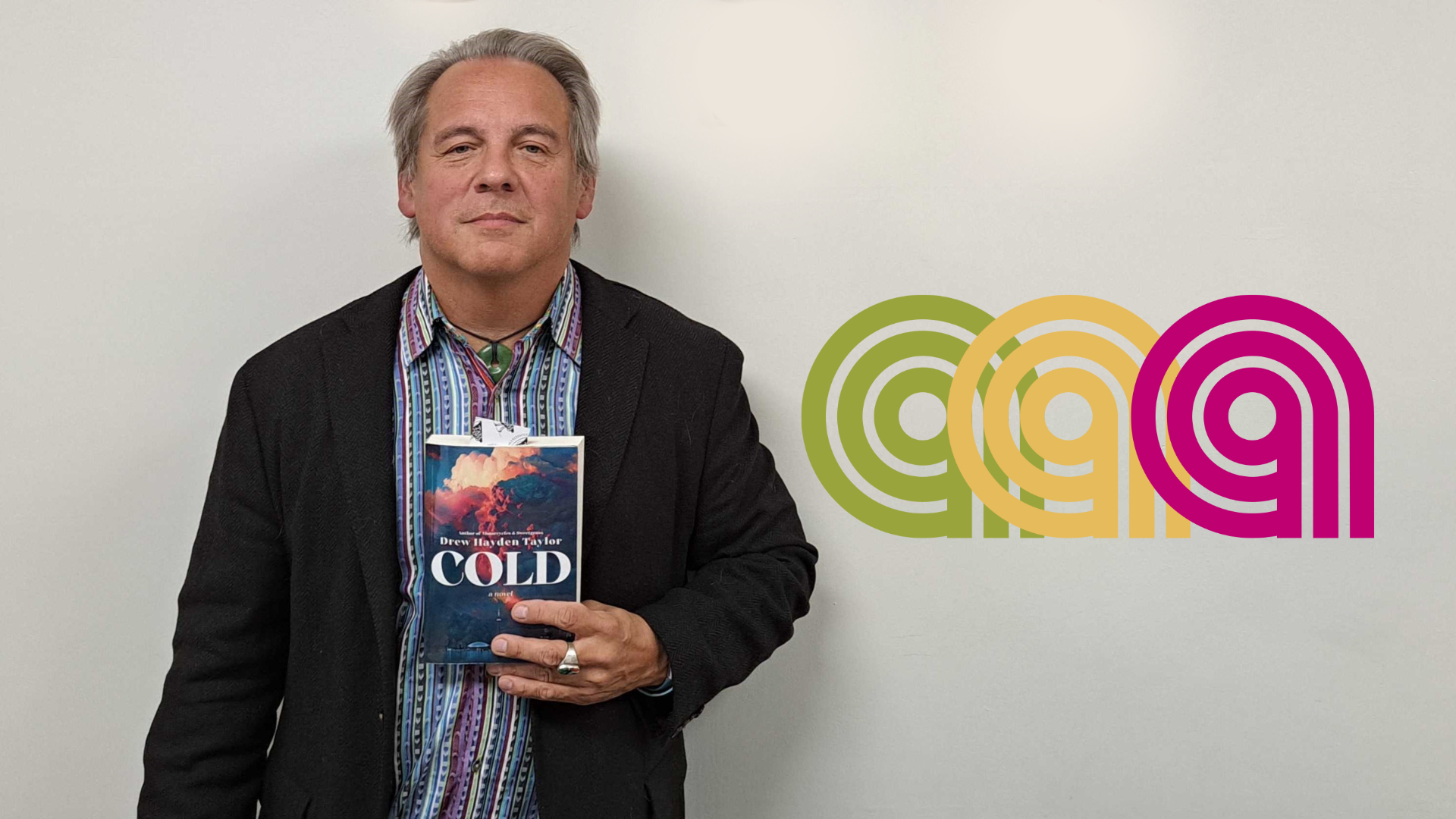On January 27th, ReFrame Film Festival held Wshkiigmong Dibaajmownan/Curve Lake Storytellers—an event which featured screenings of six short films produced as part of a project in Market Hall.
The short films were created by Curve Lake residents and shared important stories of their cultures, histories, and healings from the violent legacies of Colonialism. Following the screening, dance artist Kelli Marshall performed a traditional Anishnabeg healing dance.
The event began with an introduction by Curve Lake elder Alice Olsen Williams who read Marilyn Dumont’s poem “Not Just A Platform for my Dance” ReFrame Film Festival’s Board Chair Deborah Berill then introduced the event’s participants, starting with Trent University professor, Nadine Changfoot. Changfoot spoke about the creation of this film project, inspired by Curve Lake’s elders’ knowledge, including Williams, reminding those in attendance of their role as “important knowledge holders, carriers and leaders in their communities as well as ours, and tireless activists.”
The first short shown was Carol Taylor’s The Best of Both Worlds, recounting her reconnection with her Indigeneity and history with Curve Lake, providing care and healing to Anishinaabe people.
Taylor explained that she was initially doubtful about the project. Nonetheless, she explained that she felt lucky.
“I was able to go through my work, and I learned and experienced the Western way administratively and I was able to put that information into our First Nations,” she said after the film’s screening.
Missy Knott’s For the Little Girl who Dances from the South centres on Knott’s relationship with her identity and culture, exploring the “radical hope of decolonial love” in the form of a kind of poetic and cinematographic letter to her daughter.
Knott explores the conflicting expectations put onto her as a parent by Western administrative and legal systems. The Curve Lake Storytelling project brought her hope, showing her that “someone on that side of things is capable of understanding.” To her daughter, she says “I will not abandon you like the system abandoned me.”
Sarah Lewis’ The Rez featured Lewis’ gracious poetry, juxtaposed with images from Curve Lake’s land and people. She sings praises of “the rez” retelling histories of Indigenous resistance. In the generalized manner she refers to it, the rez is “the place they intended to keep us out of the way, not realizing that together, we are stronger.”
The Rez deals with life on a reservation both as a concept, as an ideal that Indigenous peoples around the world can find in their own reservations. Rather than focus on a single location, the film chooses to emphasize the radical hopes of deconolonialism. Lewis’ voice thick with assurance, she declares “our mouths have tasted more fires than you’ll ever know have been lit from the colonial belly of the beast, but this belly is full of laughter.”
“Thought our stories would be burned down, decimated along with their red brick residential schools, not realizing that oral traditions can’t be burned down” she opines, speaking fireproof histories into the room.
The event closed off with Kelli Marshall’s healing dance, prefaced with a declaration of the importance of Indigenous traditions and resistance. Marshall told the story of her jingle dress, being called to dance in it as it began to jingle while her home was empty and all windows were closed.
“I dance to survive because that’s how I heal, because even at three years old, what I recognized was that when I was dancing, I had control of my body, every movement, everything that I did,” she explained.
As Marshall let go of the microphone to begin her performance, she seemed to freeze for a second, before seizing it once again, to exclaim “From Turtle Island to Palestine! Free Palestine!” The room erupted in applause.
Elder Taylor spoke to Arthur about the legacy of colonialism in Indigenous communities, explaining that “we’ve been taught horrible, horrible things about ourselves going through the schools, going through the Church.”
However, she was adamant that she and her fellow Anishinaabe people have been left “absolutely, extremely strong” and noted that events such as this one are expressions of healing and strength, “it’s our time to have our voice, it’s our time.”
Elder Williams also spoke on the importance of Indigenous strength, evoking a moment during the event where she had used the term ‘invaders’ to refer to settlers on Turtle Island.
“That’s also the truth, and nobody says that because it’s too scary to insult the white man [...] we’re always thinking of feelings, and not wanting to hurt their feelings, yet look at what they did to us. [...] They invaded, they stole our land.”
Trent Central Student Association (TCSA) President, Aimee Anctil, was also in attendance and noted that this event was one of Trent’s research partnerships with Curve Lake First Nation, something she believes the university “really wants to continue doing.”
The TCSA notably gave out fifty tickets to this event to Trent students.
She noted “with TCSA, the priority for us is taking actions, not just words.” Among these actions, Anctil pointed out research and arts-based advocacy, their Anti-Racism conference, engagement with Indigenous communities and “trying to get students to engage with Decolonizing and Indigenization.”
Anctil described Trent’s collaboration on these projects as “a bit slow,” but progressing. She stated that the recent legislation passed by the Federal Government limiting international student enrolment—which endangers the entirety of Trent’s current economic model—shouldn’t have any impact on initiatives towards Indigenous learning, or Trent’s receptiveness towards these initiatives, according to her recent conversation with university President Leo Groarke.
In retrospect, Berill said of the event “people wonder, as non-Indigenous people, what we can do, and we all grapple for that, and being able to provide space, it seems like nothing and it’s so huge.” When asked about the possibility of a form of sequel or continuation of this event, ReFrame Creative Director Eryn Lidster replied that they were “excited to see where they go with this work.”














.png)



.png)







.png)